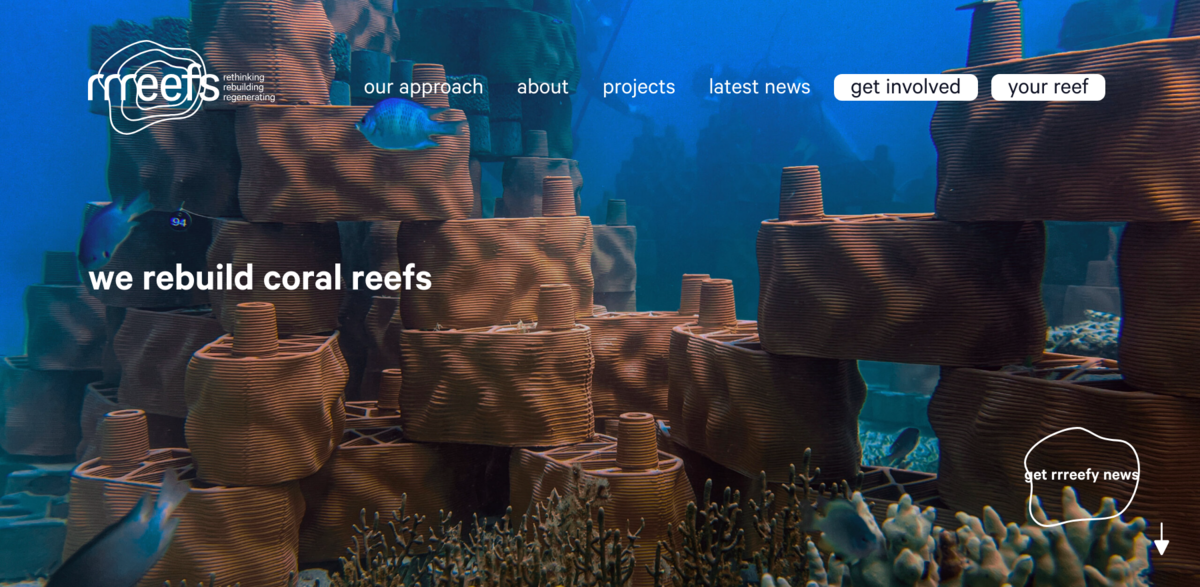What is the RRREEFS Project?
RRREEFS is all about rebuilding coral reefs—yes, those vibrant underwater cities that are sadly disappearing. Their mission? To revive 1% of coastal coral reefs by 2034, bringing back rich marine biodiversity that supports healthy oceans and thriving communities. But this isn’t just any restoration effort. RRREEFS rethinks how human-made reefs are built, using a modular, 3D-printed system made from pure clay. These bricks aren’t just durable; they’re designed to be a natural home for coral and marine life, with hollow spaces that shelter fish and other critters. It’s a blend of science, art, and technology coming together to give coral reefs a fighting chance.
Main Benefits of the RRREEFS System
The impact of RRREEFS is both fast and visible. Here’s a quick snapshot:
- After just a few months, marine life starts returning to the new reefs.
- Within 3 months, fish biodiversity on RRREEFS structures matches that of natural reefs.
- Natural coral settlement begins between 2 to 9 months.
- After 3 to 4 years, coral covers the reef abundantly, creating a self-sustaining ecosystem.
- Fully scaled, RRREEFS could protect 700 km of coastline with a 50m barrier of regenerated reef within 10 years.
- The project aims to restore 1% of reef-dependent coastal areas, a significant step for ocean health.
The Innovative RRREEF System Design
What sets RRREEFS apart is its unique approach to reef construction. Instead of traditional methods, they use cutting-edge 3D printing technology to create modular reef bricks made of pure clay. These bricks are customizable in shape and size, designed specifically to encourage coral larvae to settle and grow. The surface texture interacts with water flows, guiding tiny coral larvae to safe spots where they can thrive, protected from predators and sand. Plus, the hollow design provides excellent habitats for juvenile fish, crustaceans, sea urchins, and many other reef dwellers. It’s like building a Lego reef that nature can take over and flourish within.
The People Behind RRREEFS
RRREEFS was founded by four passionate women—Ulrike, Marie, Hanna, and Josephine—who share a deep love for the ocean and a fierce determination to help coral reefs survive the next 30 years. Their team is a vibrant mix of science, art, international relations, diving, and marketing pros. Together, they bring a unique interdisciplinary approach that blends expertise and creativity, all driven by respect and empathy for nature. Their strong ethical principles ensure transparent and honest communication, making RRREEFS not just a project, but a movement.
Science, Art, and Education: The Three Pillars
RRREEFS isn’t just about building reefs; it’s about creating lasting change through three core pillars:
- Science: Every reef project is accompanied by scientific research and monitoring to improve the system continuously.
- Art: Art acts as a catalyst for awareness and action, connecting people from diverse cultures through design and architecture.
- Education: Raising awareness about coral reef loss, climate change, and environmental challenges is key to broadening impact and inspiring solutions.
Project Impact and Sustainable Development Goals (SDGs)
- SDG 14: Life Below Water – Protecting and restoring marine ecosystems.
- SDG 13: Climate Action – Addressing climate change impacts on coral reefs.
- SDG 15: Life on Land – Supporting biodiversity and ecosystem health.
- SDG 17: Partnerships for the Goals – Collaborating with local communities and organizations.
- SDG 12: Responsible Consumption and Production – Promoting sustainable practices in reef restoration.
Why Coral Reef Restoration Matters Now
Coral reefs are facing a crisis. Climate change, pollution, overfishing, destructive fishing methods, careless tourism, and coral mining are pushing these ecosystems to the brink. Without swift action, up to 95% of the world’s corals could be gone by 2050. The International Coral Reef Society warns that the coming years might be the last chance to change this trajectory—from collapse to recovery. RRREEFS tackles this challenge head-on by rebuilding reef structures that not only regenerate marine life but also protect coastlines from erosion and flooding. Their eco-engineered reefs increase biodiversity, support coastal communities, and help build resilience against environmental threats. It’s a hopeful vision for the future of our oceans.





















